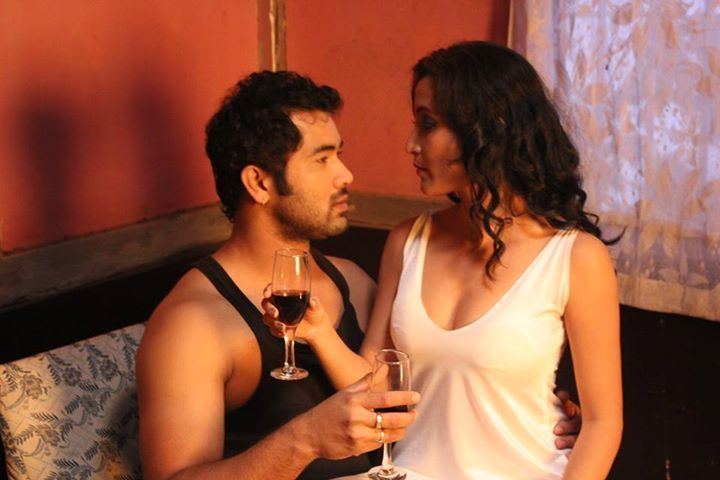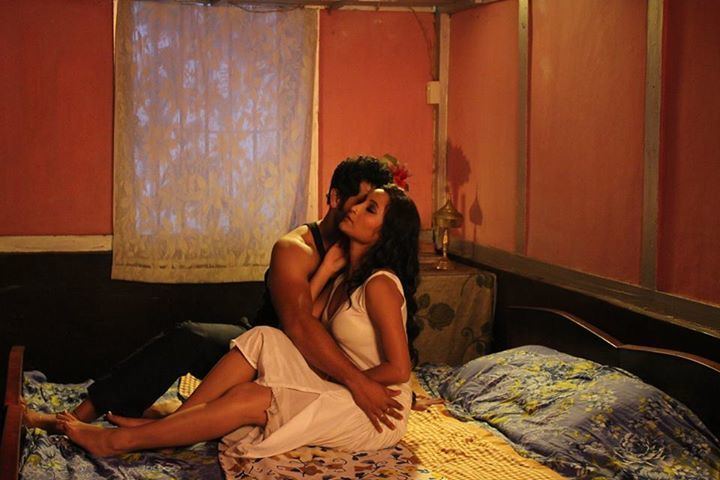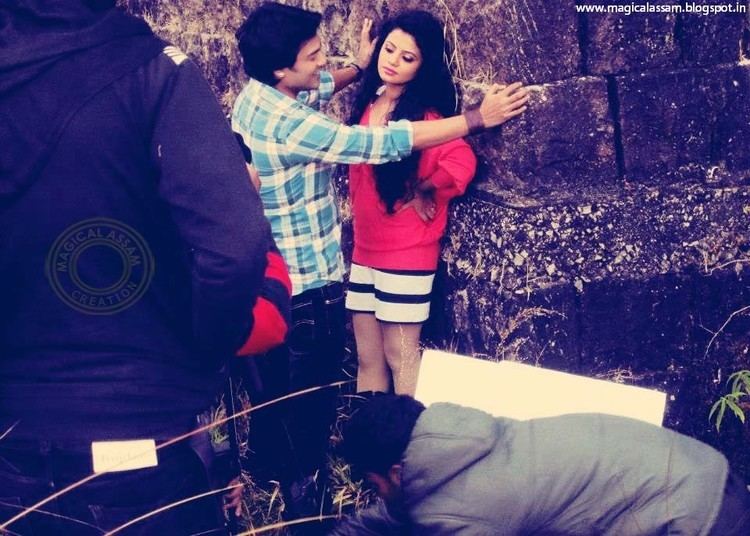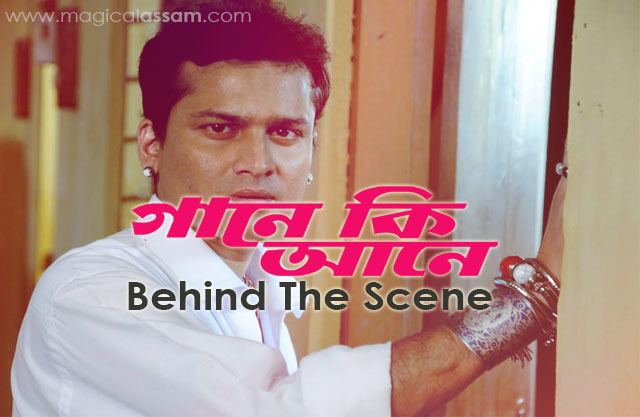Assamese cinema
6 /10 3 Votes
| ||||||||||||||||||||||||||||||||||
 | ||||||||||||||||||||||||||||||||||
Assamese cinema (Assamese: অসমীয়া কথাছবি) (also known as Jollywood) is cinema in the Assamese language, watched primarily in Assam, India. The industry was born in 1935 when Jyoti Prasad Agarwala released his movie Joymoti. Since then Assamese cinema has developed a slow-paced, sensitive style, especially with the movies of Bhabendra Nath Saikia and Jahnu Barua.
Contents
- 1930s
- 1940s
- 1950s
- 1960s
- 1970s
- 1980s
- 2010s
- Highest Grossing Assamese Films
- Assam State Film Awards
- Prag Cine Awards
- Brahmaputra Valley Film Festival
- References

However, despite its long history, and its artistic successes, for a state that has always taken its cinema seriously, Assamese cinema has never really managed to break through on the national scene despite its film industry making a mark in the National Awards over the years. Although the beginning of the 21st century has seen Bollywood-style Assamese movies hitting the screen, the industry has not been able to compete in the market, significantly overshadowed by the larger industries such as Bollywood.

1930s

The origins of Assamese cinema can be traced back to the dreams and imagination of a revolutionary visionary Rupkonwar Jyotiprasad Agarwala, who was also a distinguished poet, playwright, composer and freedom fighter. He was instrumental in the production of the first Assamese Film Joymati in 1935, under the banner of Chitralekha Movietone. Due to the lack of trained technicians, Jyotiprasad, while making his maiden film, had to shoulder the added responsibilities as the script writer, producer, director, choreographer, editor, set and costume designer, lyricist and music director. The film, completed with a budget of 60,000 rupees was released on 10 March 1935. The picture failed miserably. Like so many early Indian films, the negatives and complete prints of Joymati are missing. Some effort has been made privately by Altaf Mazid to restore and subtitle whatever is left of the prints. Despite the significant financial loss from Joymati, the second picture Indramalati was filmed between 1937 and 1938 finally released in 1939. Pramathesh Barua released his Assamese version of Devdas (1937 film) in 1937. It was the last of the 3 language version following Bengali and Hindi.
1940s

Remaining strong in the face of adversity, Agarwala made another film after a lapse of two years titled Indramalati. It was his second and last film. The eminent composer and singer of Assam Bhupen Hazarika, played a stellar role in the play. With the passing away of Jyotiprasad, the Assamese film scene witnessed a temporary lull for about a couple of years. But things changed with the onset of World War II, Taking advantage of this, Rohini Kr. Baruah made a film on a relevant historical topic called Manomati in 1941. It was followed by films like Parvati Prasad Baruwa's Rupahi (1946), Kamal Narayan Choudhury's Badan Barphukan (1947), Phani Sharma's Siraj, Asit Sen's Biplabi, Prabin Phukan's Parghat and Suresh Goswami's Runumi.
1950s

The most remarkable film of the fifties was Piyali Phukan which went on to win a National award.The movie was produced by eminent film producer Gama Prasad Agarwalla under the aegis of Rup Jyoti Productions. The film was directed by Phani Sharma and music was composed by a young Bhupen Hazarika. The film was about the life of the freedom fighter Piyali Phukan, who stood against the British Rule. He was executed by the British on charges of Treason. This film technically was very advanced for that time. In 1955, a new talent Nip Barua made his directorial debut with Smrit Paras. His subsequent films Mak Aaru Moram and Ranga Police won many state awards and the silver medal at the national level. Bhupen Hazarika also produced and directed his first film Era Bator Sur. Prabhat Mukherjee made a film on the universality of mother-hood, Puberun (1959), which was shown in the Berlin Film Festival.
1960s

The next notable film production was Lachit Borphukan by Sarbeswar Chakraborty. Bhupen Hazarika made his unforgettable musical Shakuntala in 1961, which proved equally successful with critics and the press, winning the president's silver medal. Following this, a chain of films went into regular production and got released, including Nip Barua's Narakasur, Anil Choudhury's Matri Swarga, Brojen Barua's Itu Situ Bahuto and Mukta and Anwar Hussain's Tejimala.

By the middle of the sixties, film began to be produced in Assam on a regular basis. However, between 1935 and 1970 a total of 62 films were produced. Besides the film makers already referred to, many others engaged in film making during the period included Pravin Sharma, Saila Barua,Amar Pathak, Indukalpa Hazarika, Brajen Barua, Dibon Barua, Debkumar Basu, Amulya Manna, Gauri Barman, Atul Bardoloi, Sujit Singha, Nalin Duara and Prafulla Barua.
1970s
During the period of 1970-82 a total of 57 Assamese films were made. New directors started emerging on the horizon. Samarendra Narayan Dev's Aranya (1970), Kamal Choudhury's Bhaity (1972, the first colour film of Assam), Manoranjan Sur's Uttaran (1973), Prabin Bora's Parinam (1974), Deuti Barua's Bristi (1974), Pulok Gogoi's Khoj (1974), Padum Barua's Gonga Silonir Pakhi (1976), Bhabendranath Saikia's Sandhya Raag (1977) and Atul Bordoloi's Kollol (1978) are films worth mentioning.
1980s
Notable directors of contemporary Assamese cinema are Jahnu Barua (who directed Aparoopa, Papori, Halodhia Choraye Baodhan Khai, Bonani, Firingoti and Xagoroloi Bohu Door); Sanjeev Hazarika (Haladhar, Meemanxa) and Bhabendra Nath Saikia who directed Sandhya Raag, Anirbaan, Agnisnaan, Sarothi, Kolahol, Abartan, Itihaas and Kaal Sandhya). Other directors include Santwana Bordoloi who directed Adajya, Bidyut Chakraborty who made Rag Birag, both of which have won national and international awards, and Manju Borah with her multiple award-winning films such as Baibhab, Akashitarar Kathare, and Laaz.
2010s
The 2010s saw the release of two popular Assamese blockbusters - Raamdhenu and Mission China, each collecting over ₹1 crore in the box office.
Highest Grossing Assamese Films
Background color indicates the now running on theatersAssam State Film Awards
Assam State Film Award is an award ceremony for Assamese Films.
Prag Cine Awards
Prag Cine Awards are presented annually by Prag News. The aim of the award is to give support, recognition and inspiration to the Assamese film industry and honour some of the eminent film personalities who have contributed to the cause of Assamese cinema. The award was first instituted in the year 2003. Starting from 2015, films produced in other Northeastern states were also honored in this ceremony.
Brahmaputra Valley Film Festival
Brahmaputra Valley Film Festival is a homage to the rich culture of Northeast India. The festival is dedicated to the film fraternity of the Northeast region of India specially Assam. It is an initiative for new film makers to come together and rediscover various aspects of film making. The film festival is hosted in Guwahati, Assam, India annually since thye year 2013. It is an initiative of Tattva Creations.
